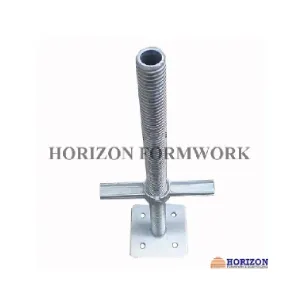ਦਸੰ. . 12, 2024 14:56 Back to list
Understanding Types of Column Formwork
Column formwork plays a vital role in shaping and supporting concrete columns during construction. Specific types like circular column formwork, curved column formwork, and inclined column formwork address unique architectural and structural needs. In this guide, we’ll explore these types and their uses.

What is Column Formwork?
Column formwork refers to temporary structures used to shape and support freshly poured concrete until it hardens and can bear its own weight. It is widely used in creating vertical load-bearing elements like columns.
Key Features of Column Formwork:
- Modular Design: Adaptable to various sizes and shapes.
- Reusable: Designed for repeated use in multiple projects.
- Durability: Made from materials like steel, plywood, or aluminum.
Benefits of Column Formwork:
- Ensures precise dimensions and smooth finishes.
- Reduces construction time with easy setup and removal.
- Improves the safety and quality of concrete columns.
Circular Column Formwork
Circular column formwork is specifically designed for creating round or cylindrical columns. It is commonly used in modern architectural designs where aesthetics are crucial.
Characteristics of Circular Column Formwork:
- Round Profile: Ensures uniform curvature and consistent dimensions.
- Material Options: Made from steel, plastic, or laminated plywood for flexibility and strength.
- Ease of Use: Pre-assembled sections simplify installation.
Advantages:
- Provides a high-quality surface finish.
- Supports large loads due to robust construction.
- Ideal for decorative or exposed concrete columns.
Applications:
- Modern commercial and residential buildings.
- Infrastructure projects like bridges and flyovers.
- Industrial facilities requiring rounded support structures.
Curved Column Formwork
Curved column formwork caters to non-standard, custom architectural shapes. It is flexible enough to create elliptical, parabolic, or other curved profiles.
Characteristics of Curved Column Formwork:
- Customizable: Adjustable to match unique design specifications.
- Strong Framework: Reinforced to handle the pressure of wet concrete.
- Precision: Maintains design integrity during the pouring process.
Advantages:
- Enables complex architectural designs.
- Enhances the visual appeal of structures.
- Reduces the need for post-pour modifications.
Applications:
- Iconic landmarks and artistic structures.
- Decorative facades and interior columns.
- Projects requiring unique design elements.
Inclined Column Formwork
Inclined column formwork is engineered for columns that are not perfectly vertical, providing support for slanted or angular designs.
Characteristics of Inclined Column Formwork:
- Adjustable Angles: Accommodates varying inclinations and heights.
- Stable Support: Designed to resist shifting during the pouring process.
- Reinforced Structure: Ensures safety and durability.
Advantages:
- Facilitates innovative designs in modern architecture.
- Ensures stability even at steep angles.
- Minimizes errors during concrete placement.
Applications:
- Slanted structural elements in bridges or towers.
- Modern, cutting-edge architectural projects.
- Specially engineered structures requiring precise angles.
Comparing Column Formwork Types
|
Feature |
Circular Column Formwork |
Curved Column Formwork |
Inclined Column Formwork |
Standard Column Formwork |
|
Shape |
Cylindrical |
Custom curves |
Inclined or slanted |
Rectangular or square |
|
Complexity |
Simple |
Moderate to high |
Moderate |
Low |
|
Reusability |
High |
High |
High |
High |
|
Applications |
Aesthetic structures |
Decorative designs |
Angled structures |
General-purpose columns |
|
Materials |
Steel, plywood, plastic |
Steel, plywood, flexible molds |
Steel, reinforced plywood |
Steel, aluminum, or plywood |
Tips for Using Column Formwork Effectively
- Choose the Right Type: Match the formwork to the column’s design requirements.
- Ensure Proper Alignment: Use supports and clamps to maintain accuracy.
- Invest in Quality Materials: Durable formwork reduces repair costs and improves results.
- Regular Maintenance: Clean and store formwork properly for extended lifespan.
- Safety First: Follow manufacturer guidelines to ensure stability during pouring and curing.
Whether constructing standard vertical columns or exploring innovative designs, selecting the right formwork system—circular, curved, or inclined—is essential for success. Each type offers unique benefits tailored to specific architectural and structural requirements. By understanding these options, construction professionals can ensure efficiency, quality, and precision in their projects.
-
Timber Beam H20 for Agricultural Buildings
ਖ਼ਬਰਾਂJul.21,2025
-
Tie Rod Concrete Formwork for Bridge Construction
ਖ਼ਬਰਾਂJul.21,2025
-
Table Formwork for Slab Edge Protection
ਖ਼ਬਰਾਂJul.21,2025
-
Load Calculations for Wall Formwork System
ਖ਼ਬਰਾਂJul.21,2025
-
Concrete Column Form Work Systems Productivity Tips
ਖ਼ਬਰਾਂJul.21,2025
-
Beam Slab Formwork for Ribbed Slabs
ਖ਼ਬਰਾਂJul.21,2025